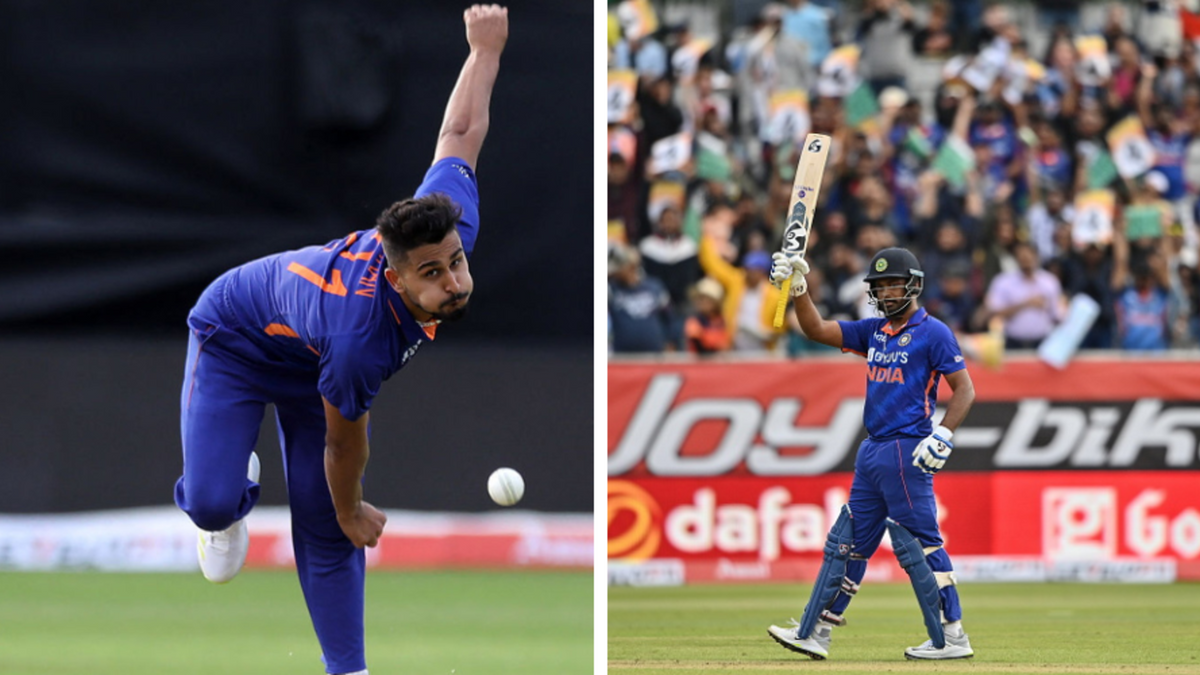
India defeated Ireland 2-0 in the T20I series, with the visitors being led by Hardik Pandya. And while a short, two-match series, against a lower-ranked Ireland, isn’t always the best way to make a fair assessment, here are five takeaways from India’s unbeaten trip.
Deepak Hooda is here to stay
Hooda has been in the form of his life in the last few months. After ending the 2021/22 Syed Mushtaq Ali Trophy as the second-highest run-scorer with 294 runs at an average of 73.50 and a strike rate of 168, he smashed 451 runs in the IPL that followed, ending among the top-ten run-getters. Having batted in the middle order for most parts, Hooda displayed he could be an effective player up the order as well in the two T20Is against Ireland.
In the absence of Ruturaj Gaikwad, he was asked to open the innings and steered the team in a tricky run chase of 109 off 12 overs, scoring an unbeaten 47 in 29 balls in the first T20I. He carried on in the next game as well, where he batted at No.3, striking at 182.46 as he became only the fourth men’s cricketer from India to score a T20I ton.
His ability to bat at any position, and adapt his game according to the situation means that we could see more of Hooda going forward.
Sanju Samson deserves a longer rope
Samson made his T20I debut in 2015, and only played his 14th match for India when he took the field against Ireland on Tuesday. A consistent performer in the IPL – he has scored 902 runs at an average of 32.1 and a strike rate of 146 since 2020 – Samson has not enjoyed a long run in the blue kit, but his performance should help him get a longer rope in the side.
Opening the innings in the second T20I, he started off cautiously, scoring 28 in his first 23 balls, before getting his maiden T20I fifty in 31 balls. He took on the attack thereafter and continued playing his shots even as Hooda at the other end slowed down while approaching his hundred. His wide range of shots and his ability to attack genuine pace as well were on full display in the game, and India would immensely benefit from his presence in the XI.
Chahal is India’s primary spinner across conditions
India have tried as many as ten spin bowling options in the last two years in T20Is, often giving precedence to IPL performances when it came to selecting the XI. However, the backing has not paid dividends, with nine of the ten spinners not taking more than 10 wickets in this interim. Chahal, who has scalped 20 wickets since June 2020, was not a member of the T20 World Cup in the UAE last year, a decision that still stirs a debate.
Since his non-selection, Chahal has been firing on all cylinders, picking 11 wickets in nine T20I innings at an average of 20.90 and an economy rate of just over seven. He was also the highest wicket-taker in the 2022 IPL and continued his form against Ireland, where he ended with the Player of the Match award in the first game. Under overcast conditions on a wicket that had moisture, Chahal did well to end with an economy rate of just 3.70, finishing his three overs for 11 runs. For reference, Ravi Bishnoi, Chahal’s replacement in the second T20I, conceded 41 in his four overs.
Chahal was also effective in the T20Is against South Africa earlier this month, ending with figures of 0-26, 1-49, 3-20 and 2-21 in four games. He has been a proven performer, and with not many spinners able to latch onto their chances, he should be an automatic choice in the side.
Umran Malik is still a work in progress
Malik impressed with his pace and his ability to consistently bowl over 150kph in the recent IPL, forcing experts to claim that he should be a regular member of India’s XI. However, he still has some way to go, if the Ireland series was any indication. Malik, although quick, was smashed all over the ground in both games, giving 14 off his solitary over in the first T20I, and conceding 42 off his four in the next.
Skipper Hardik Pandya, though, backed the youngster, asking him to defend 16 off the last over on Tuesday. Malik started off waywardly, giving nine of the first three balls, including a no-ball, before holding his nerve to win the game for the side. However, he still has a lot to improve on and needs more polishing before he can be in the first-choice seam attack.
Batting first is still an issue for India
Though India won the second T20I by the bare margin of four runs, it brought to the fore their struggles while defending a target. Traditionally, India have been a top-heavy side, with one player usually batting through the innings. However, the middle-order struggles to carry on the momentum if any of the top three depart early. This was the case yet again on Tuesday as well, when India opted to bat first after winning the toss.
The Men in Blue got off to a flier, reaching 189-1 in 16.1 overs, and looked well on course to race past 250 runs, after a 176-run stand between Samson and Hooda. The former’s dismissal, though, turned the tide, as India could only score 36 runs for the loss of six wickets in the remaining 23 balls. Even in the second innings, the bowlers were unable to keep things tight, allowing Ireland to come within four runs of the target.
India have won only 56.18 per cent of their T20Is batting first, a number that falls to 54 in the last three years. On the other hand, they have an overall win per cent of 72.36 when chasing, a pattern that seems to catch up with them in crucial moments.








